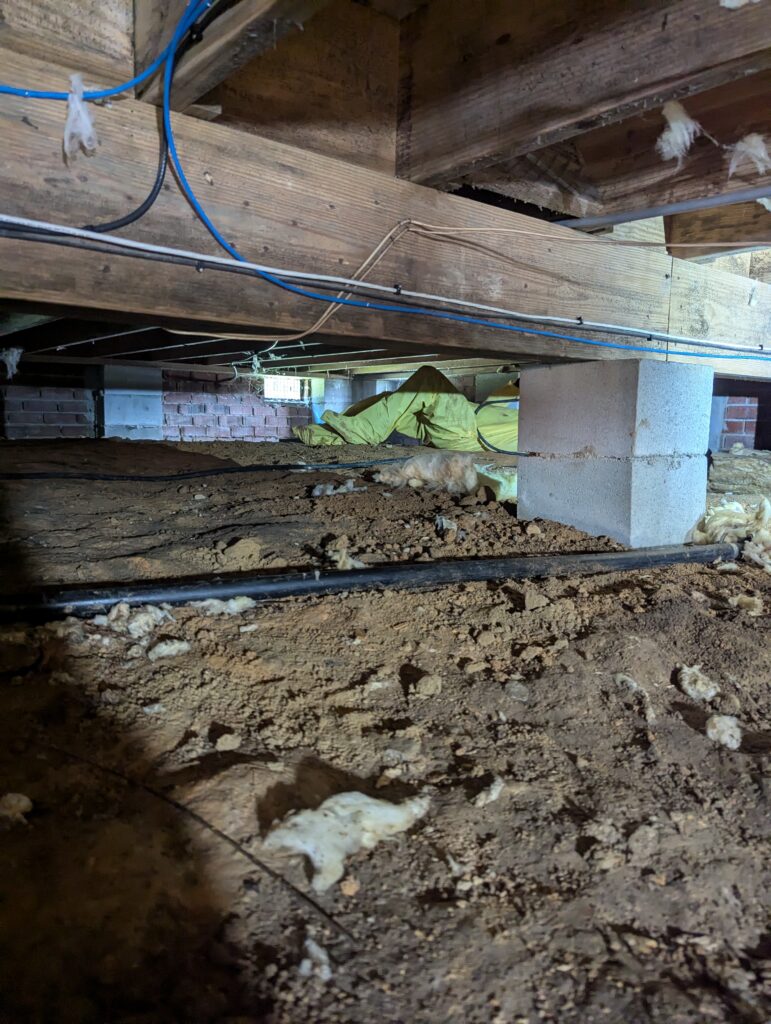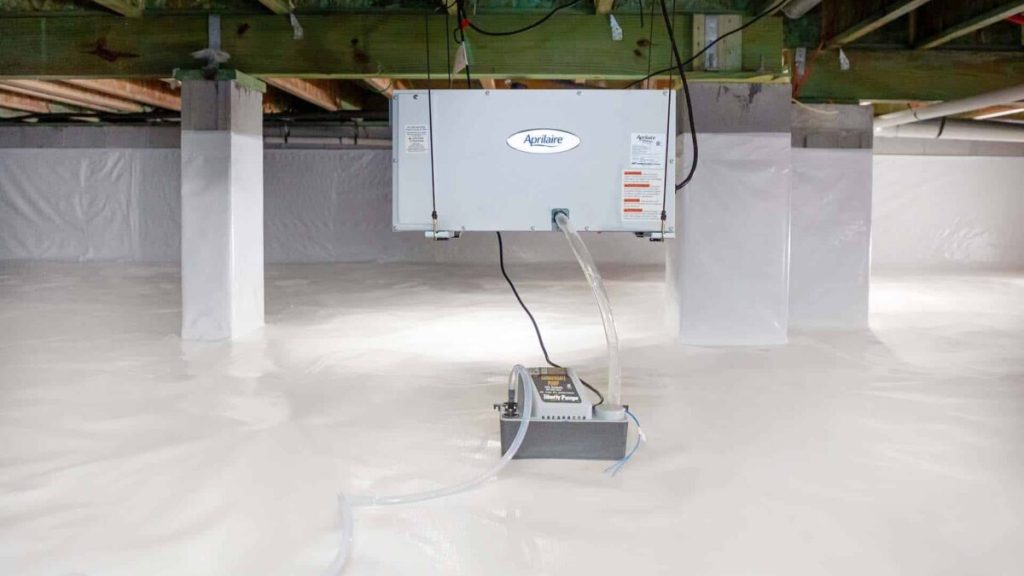Breathe easy with expert crawl space mold remediation by Vance Insulation & DryGuard Systems. Mold growth in your crawl space can significantly impact your indoor air quality, compromise your home’s structural integrity, and increase energy costs. Our specialized crawl space mold removal services in Prince George, VA, and the surrounding areas help prevent these risks, providing you with a safer, healthier environment.
With over 60 years of experience, we are the go-to contractor for effective mold remediation solutions in Virginia. From mitigating crawl space mold damage to preventing future infestations, our IICRC Mold Remediation-certified team utilizes cutting-edge tools and techniques to deliver long-lasting results.

Our crawl space mold remediation service addresses mold at its source, preventing it from recurring. We combine expert evaluation, proven treatments such as Shockwave Spray and OxyPro Cleaner, and long-term moisture control to restore and protect your home.

We utilize industry-grade solutions to neutralize mold on contact, targeting the root of the issue rather than just surface growth.
Every job starts with a free, thorough inspection to locate mold, assess its severity, and identify the underlying causes of its growth.
Our mold remediation team is trained and IICRC-certified, ensuring you get expert care with proven methods that restore your crawl space safely.
After removing the mold, we take steps to eliminate moisture sources, as a dry crawl space is crucial to preventing mold from returning.
Unchecked mold can cause respiratory issues and structural decay. Our service helps protect both the integrity of your home and your indoor air quality.
We know how Virginia’s humidity affects crawl spaces, and we apply that local knowledge to every remediation plan we create.
For severe infestations, we go beyond sprays—scrubbing joists, floorboards, and girders to completely remove all traces of mold.
We handle crawl space encapsulation from the ground up—literally. Our crew inspects, cleans, seals, insulates, and installs dehumidifiers to keep things dry and stable under your home.
Your home deserves top-tier protection against moisture, and our crawl space vapor barrier installation delivers exactly that. Depending on your needs, we use durable barriers from 10–35 mil thick to create a shield that keeps your crawl space dry.
Effective crawl space drainage begins with smart solutions, such as drain tile systems or French drains. We install high-quality polyvinyl chloride pipes and gravel channels to keep water away from your foundation.
We offer professional sump pump installation tailored to your crawl space’s unique needs. Our heavy-duty Glentronics pumps quickly kick into action to move standing water out and prevent future flooding.
Keep your crawl space healthy with our crawl space dehumidification services. We install high-performance AprilAire dehumidifiers that regulate humidity and purify the air.
Say goodbye to damp, leaky basements with our basement waterproofing services. We install drain tiles, sump pumps, and water-resistant wall panels to create a robust system that directs water away from your home.
We’re here to help with attic mold removal that goes beyond the surface. First, we inspect your attic to find problem areas, then we use powerful fungicides to eliminate mold at its source.
Upgrading your attic insulation can make a world of difference, and we specialize in finding the perfect fit for your home. Whether it’s blown-in, batt, or spray foam insulation, our solutions improve energy efficiency and comfort year-round.
Proper attic ventilation and sealing keep your home comfortable and efficient all year. We seal gaps to prevent air leaks and install ventilation to regulate temperature and moisture levels.
Building a new home? We’ve got your insulation needs covered with materials such as fiberglass, spray foam, and mineral wool. Our new construction insulation enhances energy efficiency and comfort from the start.
Retrofitting your insulation is an excellent way to bring new life to your home. We specialize in upgrading attics, walls, and floors with high-quality insulation that fits your needs.
Our crawl space insulation solutions help regulate your home’s temperature while protecting it from outside elements. From fiberglass to spray foam or Styrofoam board, we install the ideal materials to keep your home comfortable and efficient.
For maximum energy efficiency, choose spray foam insulation. Our closed-cell spray foam offers superior R-values and creates a firm barrier against moisture, pests, and outdoor air.
Looking to insulate existing walls without a big mess? Our drill and fill insulation services make it easy. We fill your walls with blown-in material, seal the gaps, and leave your home better insulated and more energy-efficient without removing the drywall.
Our insulation removal services clear out moldy, damaged, or inefficient materials, leaving your space clean and ready for something better. Once removed, we install fresh insulation so your home stays comfortable for years to come.
Here’s why we stand out as the premier crawl space contractor and insulation company for your mold remediation needs:
Military members, veterans, and first responders are eligible for a 5% discount as our way of saying thanks.
Since 1962, our family-run business has been providing exceptional crawl space services to generations of homeowners in Virginia.
Affordable solutions are within reach with flexible financing options offered through GreenSky.
We provide honest, no-pressure assessments and free consultations to help you make informed decisions.
We stand by our work with industry-leading warranties, including a five-year warranty on dehumidifiers, a three-year manufacturer’s warranty on sump pumps, and a one-year workmanship warranty on all DryGuard Systems.